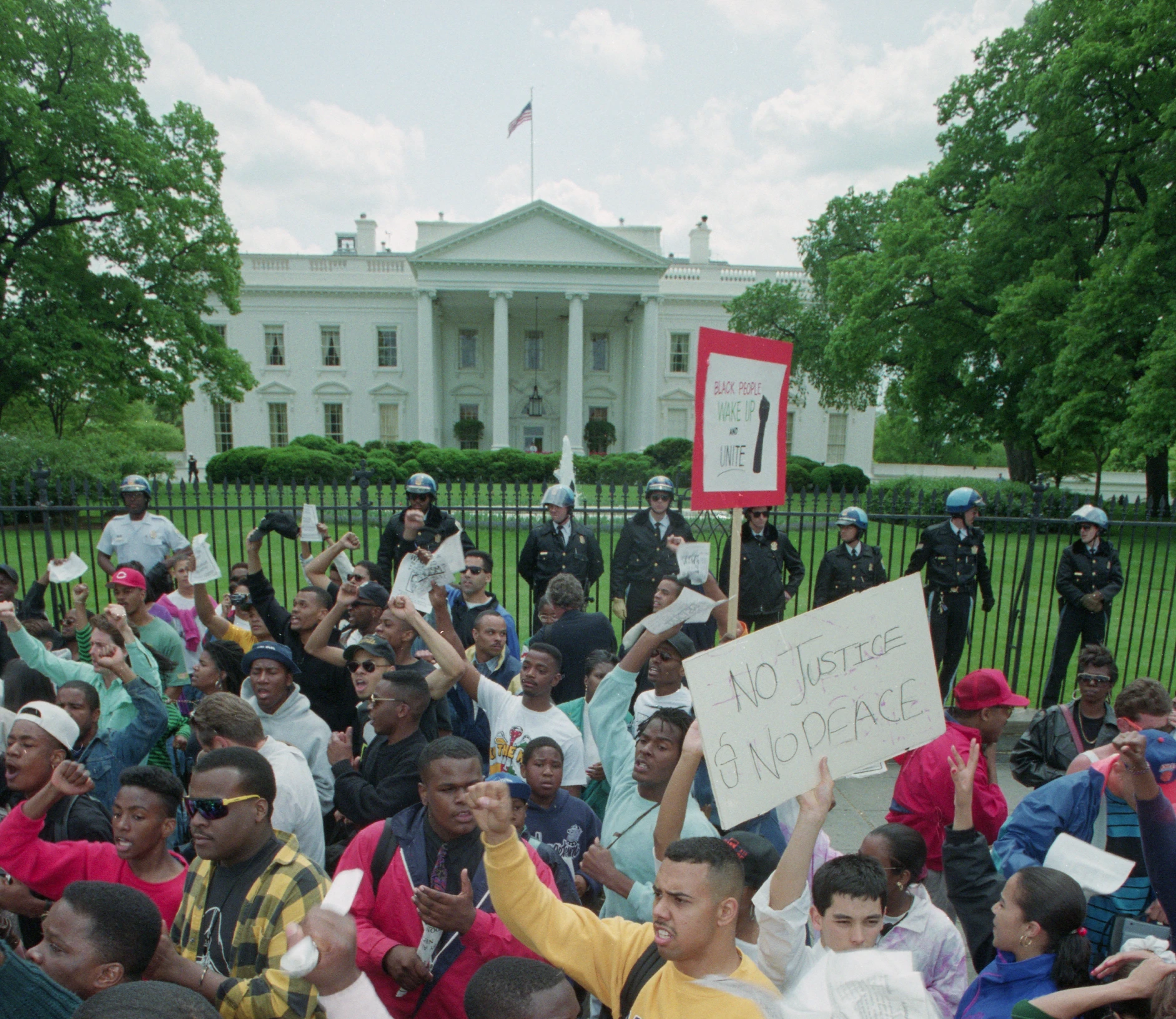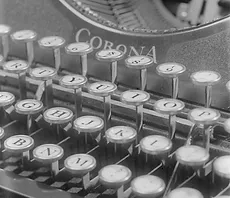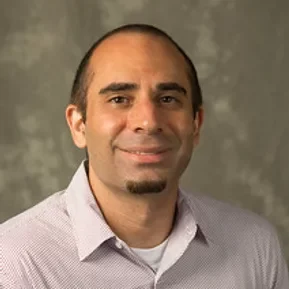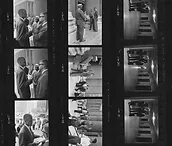Photo by Cliff Owen/Bettmann Collection/Getty Images
In March 1991, four white Los Angeles police officers assaulted Rodney King, an unarmed Black motorist. A witness videoed the beating, which caused outrage across the globe.
Two weeks later, tensions in L.A. worsened when Korean storeowner Soon Ja Du killed fifteen-year-old Latasha Harlins in a dispute over a $1.79 bottle of orange juice. A white judge eventually sentenced the shopkeeper to four hundred hours of community service and a $500 fine.
Thus, when a mostly white jury acquitted the officers in the Rodney King case on April 29, 1992, the simmering tensions boiled over into what became the largest urban uprising in U.S. history
Protesters immediately filled the streets. Arrests quickly followed, which compelled even more people to join the demonstrations. When authorities began making arrests, some protesters responded with shouts of “Black Power” and threw rocks and bottles at police cars.

Photo by Bettmann Collection/Getty Images
One Black youth explained that the Rodney King case “was just the trigger,” and the rebellion was about “all the homeboys murdered by the police, about the little sister killed by the Koreans, about twenty-seven years of oppression.” Twenty-seven years earlier, the L.A. neighborhood of Watts also had erupted after an incident of police violence.
Watts helped inspire the Black Power Movement, and because Black Power activists believed that the police had occupied Black neighborhoods, the movement also expressed the need for community control apart from outside forces. As the first photograph illustrates, these sentiments continued to resonate in 1992. “Black Power” signified the continuity of resistance against state violence between the 1965 and 1992 uprisings, or “riots” as they were called at the time.
Often lost in labelling the unrest a “riot” is the fact that protesters harbored genuine grievances and were rebelling against racial oppression and economic exploitation.
For instance, although property damage amounted to almost $1 billion (nearly $2 billion in today’s money), the rebels consciously targeted specific structures during the revolt.
While they left most Black-owned establishments standing, they attacked other businesses that were perceived as preying upon the community. They also smashed windows at LAPD headquarters and generally besieged the structures and symbols of police authority, like the security guard post set ablaze.

Photo by Bettmann Collection/Getty Images
Los Angeles Police Chief Daryl Gates presided over the city’s response to the revolt. In the preceding decades, Gates had militarized the LAPD. He created the world’s first Special Weapons and Tactics unit after the 1965 Watts uprising. The first SWAT operation targeted the L.A. headquarters of the Black Panther Party in 1969.
In 1982, moreover, Gates elicited an uproar when he attempted to rationalize why so many Black people died from police chokeholds. “We may be finding that in some Blacks when it is applied, the veins or arteries do not open up as fast as they do in normal people,” he said.
Despite a long history of racist policing practices, or as many believed, perhaps because of it, Gates remained the police chief until just after the 1992 uprising.
The federal government also saw events as a revolt. President George H.W. Bush deployed two thousand federal officers in addition to the three thousand National Guard troops already on the ground. Attorney General William Barr, who would later occupy the same post in the Donald Trump government, invoked the Insurrection Act, which mobilized Marine and Army soldiers, SWAT teams, U.S. Marshals, prison riot squads, and FBI and Border Patrol agents.
In short, the federal government militarized its response. In all, over 50 people died and more than two thousand suffered injuries. Authorities arrested 16,291, mostly Black and Latino residents, and occupied the city for ten days.

Photo by Peter Turnley/Corbis Historical/Getty Images
Anger over Rodney King’s beating and the subsequent verdict also sparked protests in other cities and in Washington DC, where Howard University students and other protesters marched from the Justice Department to the White House. Jacqueline King, a D.C. resident, expressed her dismay at the verdict. “We have marched too long for this to still be happening…. It makes you want to leave the country. You have to wonder if this is a place for us,” she lamented.
While the Rodney King case highlighted the unequal justice system, it also embodied a broader trend of expanding police departments and the prison system. Between 1987 and 1992, the state of California increased spending on policing and incarceration by 70 percent. Meanwhile, the Black unemployment rate in L.A. hovered between 40 and 50 percent, and a third of Black Angelenos lived in poverty.
After the rebellion, officials promised to introduce reforms. The city’s gangs, including the Crips and the Bloods, also declared a ceasefire to help rebuild their communities. But very few of the promised resources reached those communities.
As activist Geri Silva concluded, “It is this illusion of change where government or business…come in and say, ‘Look what we’ve done.’ And down the line, when things don’t work, they will blame the people who live in the community.”
Ultimately, the state used the uprising as justification to strengthen the police while continuing to undermine Black and brown communities.

Learn more:
Brown, DeNeen and Pierre Thomas. “In D.C., Some Link Verdict to Racism, Police Power.” Washington Post. April 30, 1992.
Camp, Jordan. “Reading the Writing on the Wall: The Los Angeles Uprising and the Carceral City.” From Incarcerating the Crisis: Freedom Struggles and the Rise of the Neoliberal State. Oakland: University of California Press, 2016.
Hackworth, David. “This Was No Riot, It Was a Revolt.” Newsweek. May 25, 1992.
Hatch, George. “City Officials, Police Brace for Possible New Violence.” Los Angeles Times. May 1, 1992.
Hinton, Elizabeth. “The Proposal.” From America on Fire: The Untold History of Police Violence and Black Rebellion Since the 1960s. New York: Liveright, 2021.
Lacey, Marc and Shawn Hubler. “Fires, Beatings, Looting Erupt; Worst Since ’65.” Los Angeles Times. April 30, 1992.





